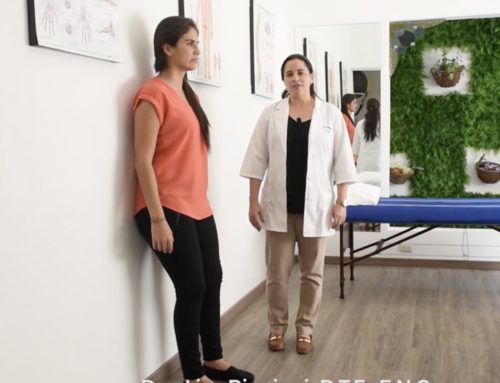Transcranial magnetic stimulation
Transcranial magnetic stimulation
Transcranial magnetic stimulation (TMS) is a noninvasive method to excite neurons in the brain: weak electric currents are induced in the tissue by rapidly changing magnetic fields (electromagnetic induction). This way, brain activity can be triggered with minimal discomfort, and the functionality of the circuitry and connectivity of the brain can be studied.
Repetitive transcranial magnetic stimulation is known as rTMS and can produce longer lasting changes. Numerous small-scale pilot studies have shown it could be a treatment tool for various neurological conditions (e.g. migraine, stroke, Parkinson’s disease, dystonia, tinnitus) and psychiatric conditions (e.g. major depression, auditory hallucinations).
How TMS affects the brain
The exact details of how TMS functions are still being explored. The effects of TMS can be divided into two types depending on the mode of stimulation:
-
Single or paired pulse TMS. The pulse(s) causes a population of neurons in the neocortex to depolarise and discharge an action potential. If used in the primary motor cortex, it produces a motor-evoked potential (MEP) which can be recorded on electromyography (EMG). If used on the occipital cortex, ‘phosphenes’ (flashes of light) might be detected by the subject. In most other areas of the cortex, the participant does not consciously experience any effect, but his or her behavior may be slightly altered (e.g. slower reaction time on a cognitive task), or changes in brain activity may be detected using Positron Emission Tomography or fMRI. These effects do not outlast the period of stimulation. A review of TMS can be found in the Handbook of Transcranial Magnetic Stimulation.
-
Repetitive TMS (rTMS) produces effects which last longer than the period of stimulation. rTMS can increase or decrease the excitability of corticospinal or corticocortical pathways depending on the intensity of stimulation, coil orientation and frequency of stimulation. The mechanism of these effects is not clear although it is widely believed to reflect changes in synaptic efficacy akin to long-term potentiation (LTP) and long-term depression (LTD). A recent review of rTMS can be found in Fitzgerald et al, 2006.
As such, it is important to distinguish TMS from repetitive TMS (rTMS) as they are used in different ways for different purposes.
TMS for the investigation of attention
A number of investigators have studied the modulation of attention using TMS and rTMS particularly combined with cognitive testing and functional brain imaging. Some leading researchers on this include Prof Vincent Walsh, Prof Masud Husain, Prof Jon Driver and Dr Chris Chambers, at the Institute of Cognitive Neuroscience and Institute of
Neurology, Queen Square in London. TMS has been used to study the phenomenon of spatial neglect, the control of spatial attention by the parietal cortex and the prefrontal cortex.
TMS for the investigation of speech and languageThe study of language and aphasia is also possible with TMS. There are numerous investigators including Prof Alvaro Pascual-Leone, Prof Elizabeth Warrington and Prof Joseph Devlin involved in this research, and has studied speech production, syntax and grammar. It has also validated the broad principles about language from the 19th century (i.e. Broca’s area, Wernicke’s area and left cerebral hemisphere language specialisation)TMS for the investigation of neuroplasticityA rich area of current interest is that current study of neuroplasticity which is believed to be the underlying basis of learning and memory in the central nervous system. TMS and rTMS has allowed the study of this phenomenon in humans where before it was only possible to be studied in animals, where the classical form is known as long term potentiation or LTP.Risks of TMS and rTMSAs it induces an electrical current in the human brain, TMS and rTMS can produce a seizure. The risk is very low with TMS except in patients with epilepsy and patients on medications. The risk is significantly higher, but still very low, in rTMS especially when given at rates >5Hz at high intensity.
The only other effects of TMS which are reported in most subjects are:
- Discomfort or pain from the stimulation of the scalp and associated nerves and muscles on the overlying skin
- Hearing from the loud click made by the TMS pulse
Clinical uses of TMS and rTMSThe uses of TMS and rTMS can be divided into diagnostic and therapeutic uses.
- Stroke
- Nonfluent aphasia
- Tinnitus
- Parkinson’s Disease
- Dystonia
- Amyotrophic lateral sclerosis
- Epilepsy
- Migraine[7]
- Dysphasia
- Hemispatial neglect
- Major depression (rTMS therapy for drug-resistant depression has been approved by Health Canada for clinical delivery since 2002).
- Phantom limb
- Chronic pain
- Obsessive-compulsive disorder (ongoing study)
- Auditory Hallucinations associated with Schizoaffective Disorders
http://en.wikipedia.org/wiki/Transcranial_magnetic_stimulation
Transcranial magnetic stimulation
Transcranial magnetic stimulation (TMS) is a noninvasive method to excite neurons in the brain: weak electric currents are induced in the tissue by rapidly changing magnetic fields (electromagnetic induction). This way, brain activity can be triggered with minimal discomfort, and the functionality of the circuitry and connectivity of the brain can be studied.
Repetitive transcranial magnetic stimulation is known as rTMS and can produce longer lasting changes. Numerous small-scale pilot studies have shown it could be a treatment tool for various neurological conditions (e.g. migraine, stroke, Parkinson’s disease, dystonia, tinnitus) and psychiatric conditions (e.g. major depression, auditory hallucinations).
How TMS affects the brain
The exact details of how TMS functions are still being explored. The effects of TMS can be divided into two types depending on the mode of stimulation:
-
Single or paired pulse TMS. The pulse(s) causes a population of neurons in the neocortex to depolarise and discharge an action potential. If used in the primary motor cortex, it produces a motor-evoked potential (MEP) which can be recorded on electromyography (EMG). If used on the occipital cortex, ‘phosphenes’ (flashes of light) might be detected by the subject. In most other areas of the cortex, the participant does not consciously experience any effect, but his or her behavior may be slightly altered (e.g. slower reaction time on a cognitive task), or changes in brain activity may be detected using Positron Emission Tomography or fMRI. These effects do not outlast the period of stimulation. A review of TMS can be found in the Handbook of Transcranial Magnetic Stimulation.
-
Repetitive TMS (rTMS) produces effects which last longer than the period of stimulation. rTMS can increase or decrease the excitability of corticospinal or corticocortical pathways depending on the intensity of stimulation, coil orientation and frequency of stimulation. The mechanism of these effects is not clear although it is widely believed to reflect changes in synaptic efficacy akin to long-term potentiation (LTP) and long-term depression (LTD). A recent review of rTMS can be found in Fitzgerald et al, 2006.
As such, it is important to distinguish TMS from repetitive TMS (rTMS) as they are used in different ways for different purposes.
TMS for the investigation of attention
A number of investigators have studied the modulation of attention using TMS and rTMS particularly combined with cognitive testing and functional brain imaging. Some leading researchers on this include Prof Vincent Walsh, Prof Masud Husain, Prof Jon Driver and Dr Chris Chambers, at the Institute of Cognitive Neuroscience and Institute of
Neurology, Queen Square in London. TMS has been used to study the phenomenon of spatial neglect, the control of spatial attention by the parietal cortex and the prefrontal cortex.
TMS for the investigation of speech and languageThe study of language and aphasia is also possible with TMS. There are numerous investigators including Prof Alvaro Pascual-Leone, Prof Elizabeth Warrington and Prof Joseph Devlin involved in this research, and has studied speech production, syntax and grammar. It has also validated the broad principles about language from the 19th century (i.e. Broca’s area, Wernicke’s area and left cerebral hemisphere language specialisation)TMS for the investigation of neuroplasticityA rich area of current interest is that current study of neuroplasticity which is believed to be the underlying basis of learning and memory in the central nervous system. TMS and rTMS has allowed the study of this phenomenon in humans where before it was only possible to be studied in animals, where the classical form is known as long term potentiation or LTP.Risks of TMS and rTMSAs it induces an electrical current in the human brain, TMS and rTMS can produce a seizure. The risk is very low with TMS except in patients with epilepsy and patients on medications. The risk is significantly higher, but still very low, in rTMS especially when given at rates >5Hz at high intensity.
The only other effects of TMS which are reported in most subjects are:
- Discomfort or pain from the stimulation of the scalp and associated nerves and muscles on the overlying skin
- Hearing from the loud click made by the TMS pulse
Clinical uses of TMS and rTMSThe uses of TMS and rTMS can be divided into diagnostic and therapeutic uses.
- Stroke
- Nonfluent aphasia
- Tinnitus
- Parkinson’s Disease
- Dystonia
- Amyotrophic lateral sclerosis
- Epilepsy
- Migraine[7]
- Dysphasia
- Hemispatial neglect
- Major depression (rTMS therapy for drug-resistant depression has been approved by Health Canada for clinical delivery since 2002).
- Phantom limb
- Chronic pain
- Obsessive-compulsive disorder (ongoing study)
- Auditory Hallucinations associated with Schizoaffective Disorders
http://en.wikipedia.org/wiki/Transcranial_magnetic_stimulation




